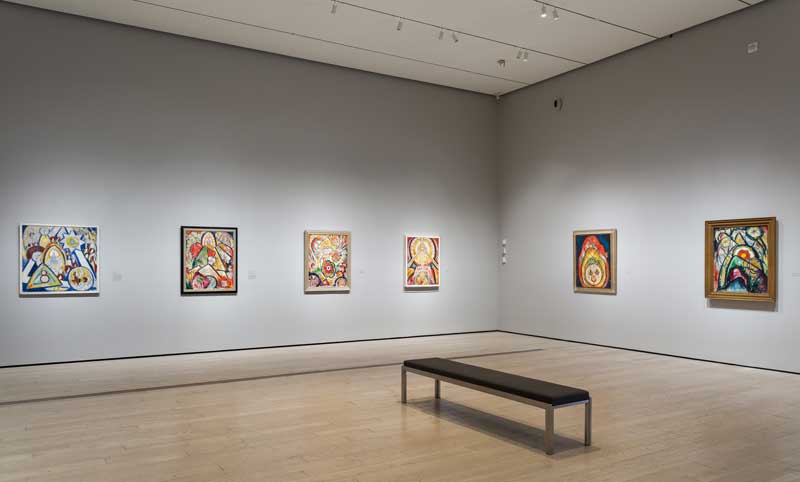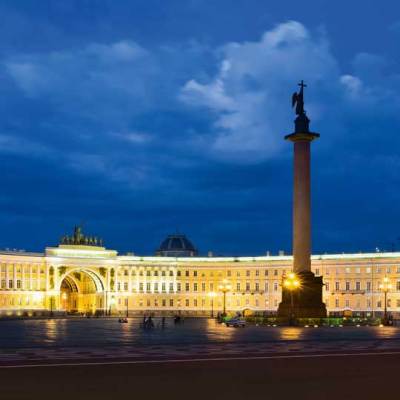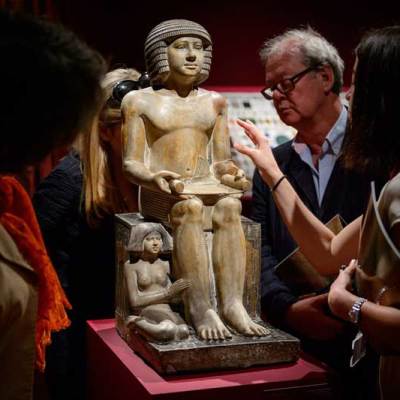Los Angeles County Museum of Art (LACMA), half a world away from the First World War’s European theatre of action, is marking that centenary with a small but significant exhibition of pictures that American artist Marsden Hartley (1877–1943) produced when he lived in Europe from 1912 to 1915, first in Paris and Munich, then for three years in Berlin. These years marked the highest reaches of his very individual, brightly-coloured expressionist abstractions laced with gentle mysticism, placing him at the forefront of the avant-garde. Back in New York his work was to be highly influential.
 Twenty-five paintings (all from US collections) from this critical moment in Hartley’s career reveal his responses to the confusing and tumultuous pre-war tensions in Berlin, where military spectacle clashed with liberal sexual attitudes and prominent gay behaviour, none of which he had experienced at home. The exhibition overlaps with the final weeks of LACMA’s superb large show ‘Expressionism in Germany and France: Van Gogh to Kandinsky’, which concerns the period before Hartley’s arrival; and then with ‘Haunted Screens: German Cinema in the 1920s’, opening 21 September. To complete the package, LACMA is holding a conference on 6–7 September to look at the period in its wider cultural context.
Twenty-five paintings (all from US collections) from this critical moment in Hartley’s career reveal his responses to the confusing and tumultuous pre-war tensions in Berlin, where military spectacle clashed with liberal sexual attitudes and prominent gay behaviour, none of which he had experienced at home. The exhibition overlaps with the final weeks of LACMA’s superb large show ‘Expressionism in Germany and France: Van Gogh to Kandinsky’, which concerns the period before Hartley’s arrival; and then with ‘Haunted Screens: German Cinema in the 1920s’, opening 21 September. To complete the package, LACMA is holding a conference on 6–7 September to look at the period in its wider cultural context.
Stephanie Barron, senior curator of modern art at LACMA and curator of the Hartley show, finds the German years ‘a particularly interesting chapter of his career’ – and a little known one. The exhibition is shared with Berlin’s Staatliche Museen zu Berlin (on show April–June, 2014) where Director Udo Kittelmann admitted Hartley was ‘virtually unknown to this day in Germany and all of Europe’. Although only 11 paintings are in both exhibitions, all works from both shows are in the catalogue.
 Of the paintings at LACMA, Barron says: ‘It’s fascinating to see them in context. It starts with his arrival in Paris, financed by Stieglitz’ – Alfred Stieglitz, the New York dealer, gave Hartley his first solo show in 1909, another in 1912. Having followed the avant-garde crowd to Gertrude Stein’s salons, Hartley moved on to Munich where in 1913 he encountered Der Blaue Reiter artists including Wassily Kandinsky, Franz Marc and Gabriele Münter. The same year he showed with these artists in the Sturm gallery’s ‘First German Autumn Salon’ in Berlin, and in the landmark Armory Show in New York.
Of the paintings at LACMA, Barron says: ‘It’s fascinating to see them in context. It starts with his arrival in Paris, financed by Stieglitz’ – Alfred Stieglitz, the New York dealer, gave Hartley his first solo show in 1909, another in 1912. Having followed the avant-garde crowd to Gertrude Stein’s salons, Hartley moved on to Munich where in 1913 he encountered Der Blaue Reiter artists including Wassily Kandinsky, Franz Marc and Gabriele Münter. The same year he showed with these artists in the Sturm gallery’s ‘First German Autumn Salon’ in Berlin, and in the landmark Armory Show in New York.
‘In Berlin’, resumes Barron, ‘he took an apartment and shortly thereafter, in this freer society, developed an infatuation for a Prussian lieutenant, Karl von Freyburg. He sees the build up and start of the war, witnesses the enthusiasm to enter the war that would end all wars. Soon Freyburg is killed; Hartley sees the reality of war. His pictures after this are essentially a memorial to him.’ She cites Hartley’s seminal Portrait of a German Officer (1914, Metropolitan Museum of New York) in which military images and abstract forms mesh to create a powerfully symbolic portrait.
 Hartley’s later German pictures ‘reflect the local Berliners’ wild fascination with Native American culture. As an American artist’, says Barron, ‘he picks up on this, and although his paintings remain abstract they have references to teepees and feather headdresses’. Out of money, Hartley returned to the US. ‘He went back and forth to Europe for a while, but having this attachment to Germany did not make him friends and in 1937 he retreated back to his birthplace, Maine, where he painted local life’.
Hartley’s later German pictures ‘reflect the local Berliners’ wild fascination with Native American culture. As an American artist’, says Barron, ‘he picks up on this, and although his paintings remain abstract they have references to teepees and feather headdresses’. Out of money, Hartley returned to the US. ‘He went back and forth to Europe for a while, but having this attachment to Germany did not make him friends and in 1937 he retreated back to his birthplace, Maine, where he painted local life’.
Most of Hartley’s German paintings – about 45 are known – were sent back to the US for sale. There, says Barron, ‘they were an important conduit between European and American artists, especially for the people Stieglitz was showing during the teens’ – O’Keeffe, Duchamp, Arthur Dove, John Marin, Alfred Maurer, the American Group of Eight (later the Ashcan School). As Stieglitz’s muse Georgia O’Keeffe said, the effect of Hartley’s pictures was of ‘a brass band in a closet’.
‘Marsden Hartley: The German Paintings 1913–15’ is at LACMA until 30 November.




